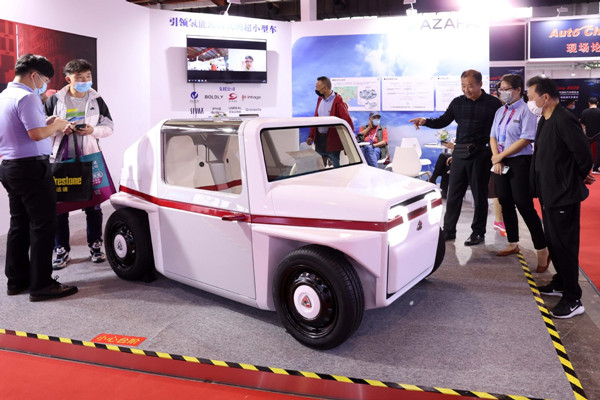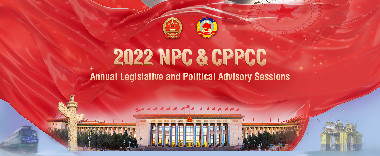More SOEs Embrace Hydrogen

Visitors look at a mini-sized hydrogen-powered car at a motor expo in Beijing, on Sept 29, 2020. [Photo by CHEN XIAOGEN FOR CHINA DAILY]
Luo Zuoxian, head of intelligence and research at the Sinopec Economics and Development Research Institute, believes the government will come up with a more detailed hydrogen energy industry development plan that covers hydrogen production, transportation and consumption.
As climate change impacts our lives more than ever, hydrogen energy-a light, storable and transportable gas which produces no emissions when made with renewable energy-is expected to play a vital role in the transition to carbon-free societies, Luo said.
JH Investment also expects the sector will receive heavy policy support in the long run as it believes hydrogen power is one of the ultimate solutions to achieve net-zero emissions.
Many private firms are also actively involving themselves in the clean energy resource, showing interest in hydrogen transport and industry as well as seeking new opportunities as integrated energy suppliers.
Companies like Foran Energy and ENN Energy have early-stage projects for blending hydrogen into gas grids, while China Suntien Green Energy Corp, a distributor of natural gas and an operator of wind farms, commissioned an onshore wind-to-hydrogen project this year.
China's Longi Green Energy Technology Co, the world's top solar panel maker, also moved into the hydrogen sector this year, a move that could allow for storage of excess solar power generated during the day for use during low-production periods.
Cities nationwide are also busy laying out their hydrogen blueprints. Beijing aims to have over 10,000 fuel cell vehicles on its roads and 37 hydrogen filling stations by 2025, as part of its ambitious plan to develop the hydrogen energy industry.
It will also cultivate 10 to 15 leading hydrogen enterprises with international influence and three to four top-notch industrial research, development and innovation platforms by then, according to a hydrogen energy industry development blueprint released by the Beijing Municipal Bureau of Economy and Information Technology.
BloombergNEF said that China is the biggest mover globally, and its industries have committed to projects that could drive global electrolyzer sales past 2 gigawatts in 2022.
Electrolyzer shipments are set to double this year and quadruple in 2022, reaching at least 1.8 GW. China is expected to account for 60 percent to 63 percent of global installations, it said.
However, clean hydrogen demand still lags behind electrolyzer makers' aggressive capacity expansion plans, Wang said.
"To sustain the momentum, more policies stimulating clean hydrogen demand need to emerge, and China's carbon neutrality target is doing the most on this front," she added.
"While few countries have laid out clear plans to drive a broad base of demand, several large projects have been proposed for later in the decade and more may emerge soon in China."
One of the hurdles for extensive application of hydrogen is that producing green hydrogen is expensive and will remain so for decade or more, according to forecasts.
Most hydrogen today is gray hydrogen, made by exposing natural gas to high heat, pressure, and steam in a process that creates carbon dioxide as a byproduct. In the production of blue hydrogen, facilities capture carbon dioxide and sell it or store it, usually deep underground. Meanwhile, green hydrogen is produced by using clean energy from surplus renewable energy sources, like solar or wind power, to split water into two hydrogen atoms and one oxygen atom through a process called electrolysis.
Blue hydrogen is viewed by some as a bridge fuel-a way to build the hydrogen economy while waiting for green hydrogen prices to come down.
Like all other clean energy technologies, green hydrogen needs government support before it can become an affordable feedstock, or serve as a fuel for power and heat, Wang said.
She said hydrogen is likely to play a more important role in cutting emissions in sectors like steel, heavy-duty truck, shipping and cement, with China's cities gearing up for the development of hydrogen fuel cell energy, another green energy solution for vehicles.



